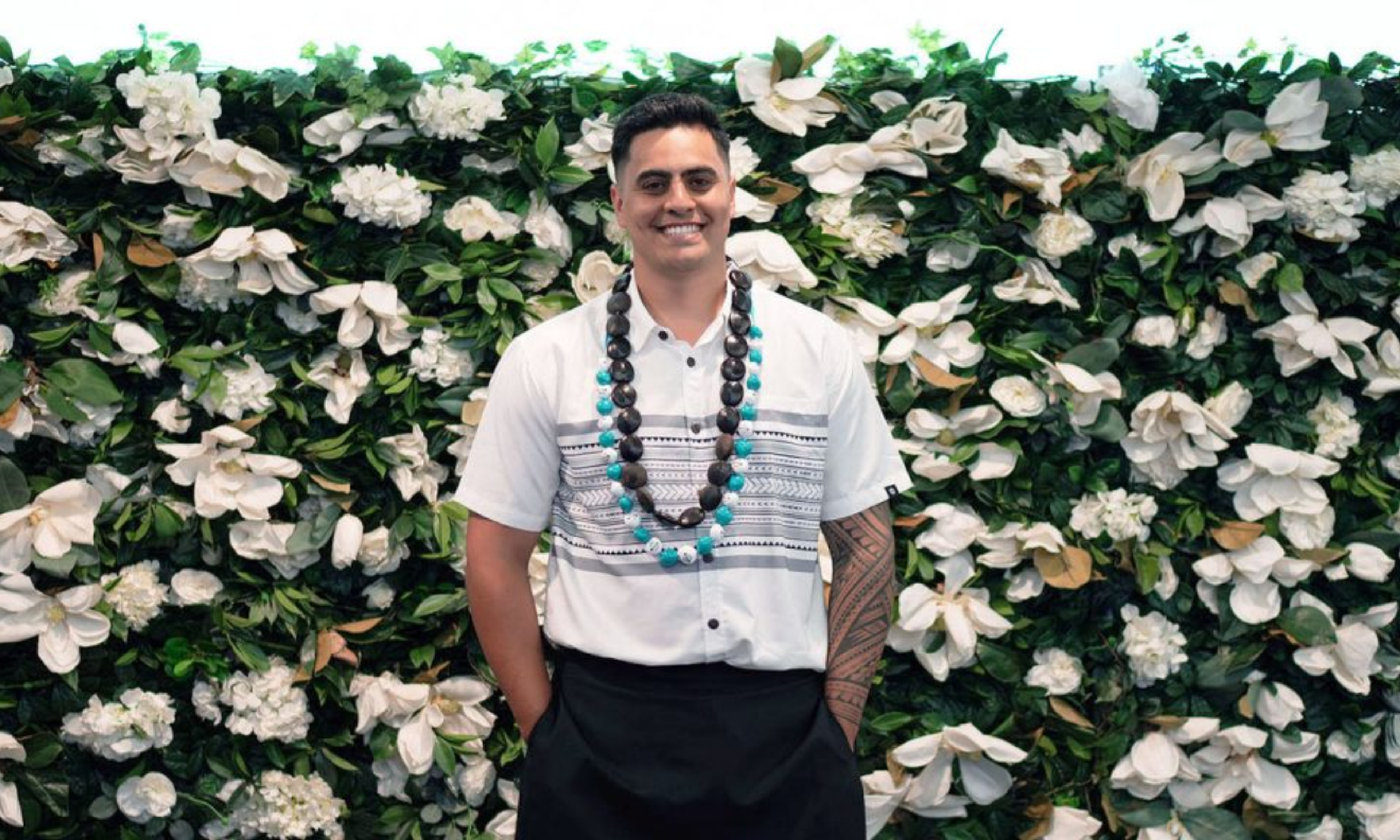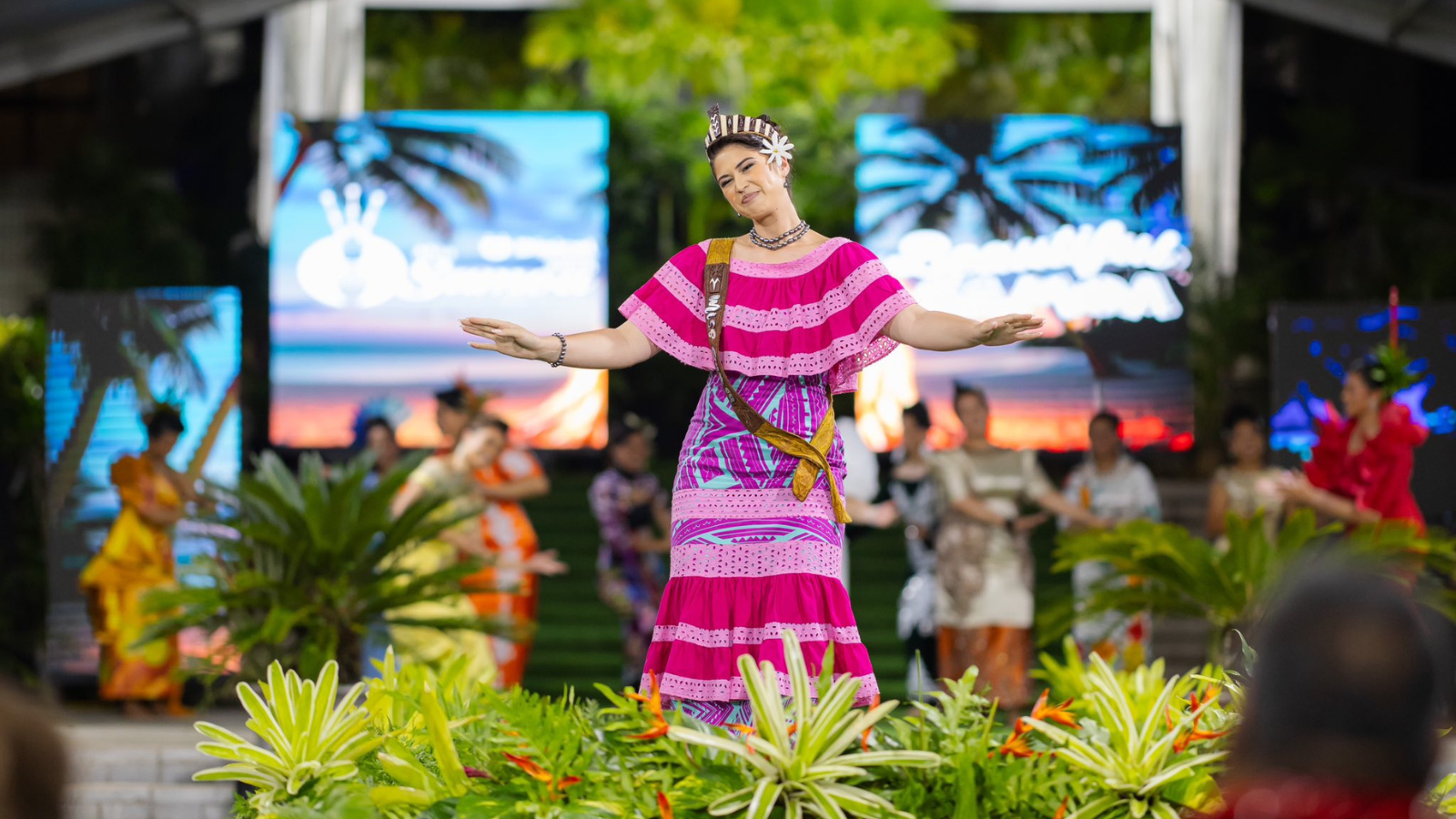

Current Miss Samoa, Litara Ieremia-Allen, will hand over her crown on Saturday night to the next Tausala.
Photo/Miss Samoa Pageant/Facebook
Is Sāmoa obsessed with pageants? It certainly seems that way
For Sāmoans, these contests go far beyond beauty. They’re a celebration of pride, culture, and community, where identity and honour are on display.


Excellence and possibility: Meet the new face of Pacific medicine in Aotearoa

Top 10 Pacific Island songs you need on your summer playlist in 2025


Our generosity is our strength but we must spend wisely this Christmas - expert

Excellence and possibility: Meet the new face of Pacific medicine in Aotearoa

Top 10 Pacific Island songs you need on your summer playlist in 2025

Every year, a few hot topics reliably unite Sāmoans on social media. Sport is usually at the top (Go Toa! Go Manu!). But the Miss Sāmoa Pageant usually lands in the top five.
As this year’s cohort of pageant hopefuls spends their final hours rehearsing and offering fervent prayers before tomorrow’s (Saturday) crowning night, it’s the perfect moment to revisit old rivalries - and prepare for next year’s Miss Pacific Islands showdown.
For such a small population, Sāmoans have an outsized fascination with pageants. There’s a comprehensive Wikipedia page dedicated to the history of Miss Sāmoa, complete with records of our women competing in Miss World and Miss Universe since the 1970s. There’s even a separate section tallying Sāmoa’s achievements at Miss South Pacific and Miss Pacific Islands - nine wins so far.
The Miss Sāmoa pageant was officially established in 1986 to complement national tourism efforts. It’s the crowning jewel of the Teuila Festival - quite literally - and for the past 25 years has served as the festival’s glittering finale.
Like most pageants, it’s marketed as an empowering platform for women, showcasing intelligence, confidence, leadership, as well as grace and poise. But anyone who has followed the pageant knows it’s not without drama.
In 2006, a winner was disqualified for being underage. Three years later, in 2009, there was a string of resignations that sent the rumour mill into overdrive: the original titleholder stepped down a month after her coronation; her successor lasted five months before citing “disrespectful treatment” from the tourism authority, and the third Miss Sāmoa completed the remainder of the reign. Earlier this year, controversy erupted at the Miss Pacific Islands pageant in Honiara when a Sāmoan judge was reportedly barred from leaving the Solomon Islands amid allegations of vote-rigging following Sāmoa’s victory.

Sāmoans love their pageants, and hold their Tausala to high standards. Photo/Miss Samoa Pageant/Facebook
One could argue that there was more public outrage over that incident than over the Pacific Islands Forum’s decision to exclude non-members from its leaders’ meeting this year. But who cares about geopolitics when beauty bragging rights are on the line, right?
So, what is it about pageantry that captivates Sāmoa? Is it a collective obsession with aesthetics, a love for performance, or simply that irrepressible competitive spirit every Sāmoan seems to possess?
It’s all of the above, but especially the latter. Sāmoans will compete over anything - from who contributes the most at a fa‘alavelave to who makes the best oka, and who has the grandest church building. Pageantry is just another arena where that national drive for excellence takes centre stage. Timely examples of this competitive spirit can be seen in the parades and excessive flag-buying leading up to the Toa Sāmoa games. How about the sold-out Kiwis v Toa final in Sydney this weekend? Those are not Kiwis supporters buying up all those rows.
Daughters of the diaspora: A look back at the Miss Sāmoa NZ Pageant
The pageant is where daughters of the diaspora return ‘home’ to reconnect with the culture their parents spoke about, and where local tama‘ita‘i showcase the poise, confidence, and can-do attitude of the new generation. In that sense, Miss Sāmoa has evolved far beyond a tourism marketing tool - it has become a means of cultural expansion and preservation, reflecting Sāmoa’s shifting identity in a globalised world.
And of course, social media has facilitated the exponential growth of that transformation. Each year, thousands of Sāmoans worldwide, especially those in New Zealand, Australia, and the United States, livestream the now two-week event. They debate outfits, siva abilities, Sāmoan fluency, English fluency, body types, and the balance between intelligence and beauty. Contestants’ long lists of villages are scrutinised with humour, and the interview segments are dissected like hungry aunties hovering over a buffet line.
Memes circulate within minutes, and commentary threads stretch longer than the question-and-answer segment itself, often devolving into offshoot arguments that sometimes turn downright ugly.
The pageant is no longer confined to Apia’s stage - it now plays out across a digital diaspora village that treats every runway walk, every fake eyelash, every im/modest puletasi or ie lavalava, and every mispronounced word as a national referendum on Sāmoan womanhood.
This visibility comes with pressure. Contestants carry the weight of representing their families, districts, sponsors, and often entire diaspora communities. A separate, dedicated piece is needed to delve into the drama surrounding diaspora beauty pageants.
The siva that spawned a thousand TikToks. One of the most iconic siva Sāmoa performances in pageant history, by Moemoana Schwenke.
A misplaced phrase or an unsteady answer can spark online storms. Yet, amid all that scrutiny, these young women keep showing up - trying their best to articulate their love for a country that may not be their physical home, to embody the graceful yet fierce spirit of a new generation, and redefine what it means to be a Sāmoan woman in the 21st century.
Critics argue that pageants still reinforce outdated beauty standards. That’s true to a degree - the gowns, the smiles, the Western-derived format. But Sāmoa’s pageants have slowly adapted to their current form, where traditionally inspired wear and siva segments now generate as much attention and interest as swimwear or talent. Speeches are delivered bilingually, celebrating fluency in both Sāmoan and English. And recent winners, like Litara Ieremia-Allen and Moemoana Schwenke, have used their platforms to champion education, climate action, and women’s leadership. That’s not vanity, that’s agency.
Perhaps that’s why pageantry persists in Sāmoa while fading elsewhere. It remains one of the few national stages where young Sāmoan women can simultaneously celebrate tradition, modernity, femininity and be unapologetically focused on why they are awesome human beings! It’s flipping the script on the traditional ‘beauty pageant’, and turning it into a platform that promotes women first, celebrates culture and unites our scattered peoples.
Sāmoa might just be the pageant capital of the Pacific - not because we love ourselves (though we absolutely do), but because every pale (crown) carries the story of who we are, who we’ve become, and who we aspire to be. Our communities, near and far, are at least in agreement that the pageant platform serves the community first and foremost. So, long may the friendly rivalries, the family debates, and the occasional scandal continue. Because if there’s one thing Sāmoans know how to do better than most, it’s to turn even a beauty pageant into a national sport.